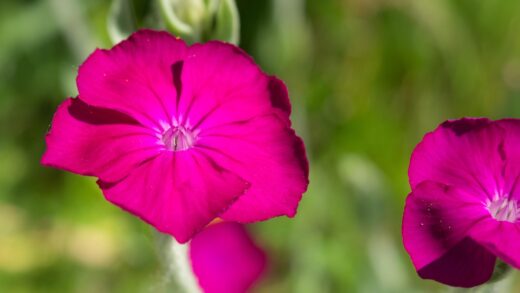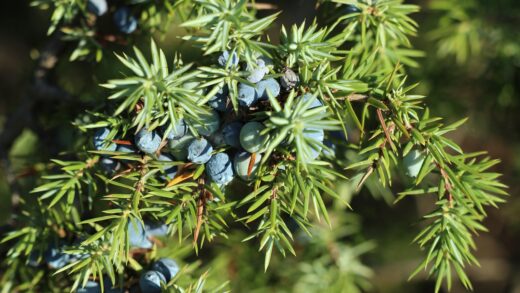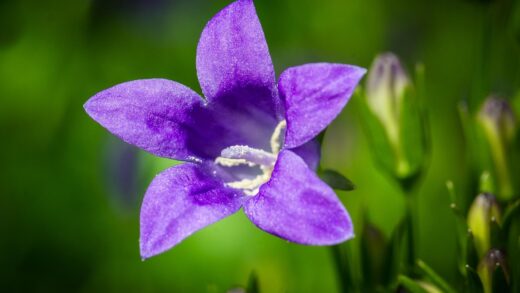While Asiatic lilies are known for their resilience and relatively easy-going nature, they are not entirely immune to the challenges posed by diseases and pests. A vigilant gardener who knows what to look for can often prevent minor issues from becoming major problems. Proactive measures, from proper planting and sanitation to the early identification of symptoms, are the cornerstones of effective pest and disease management. Maintaining the health and beauty of these stunning flowers requires an understanding of their common adversaries and the knowledge to combat them effectively, ensuring your lilies remain the vibrant centerpiece of your garden.
The most pervasive disease affecting Asiatic lilies is botrytis blight, also known as gray mold. This fungal disease is caused by the pathogen Botrytis elliptica and thrives in cool, damp, and humid conditions. The first signs are often small, water-soaked, oval-shaped spots on the leaves, which can quickly enlarge and develop a fuzzy, grayish-brown mold. The infection can spread to the flower buds, causing them to rot and fail to open, and can also affect the flowers themselves, leading to unsightly spots and premature wilting.
Preventing botrytis is far more effective than trying to cure it. The key to prevention is to promote good air circulation around the plants. This can be achieved by spacing the lilies properly at planting time, ensuring they are not overcrowded. It is also crucial to water the plants at the base, avoiding overhead watering that wets the foliage. Watering in the morning allows any moisture on the leaves to dry quickly. Good garden hygiene, such as removing and destroying any infected plant parts immediately and cleaning up all plant debris in the autumn, is also essential to reduce the amount of fungal spores that can overwinter.
Another significant threat to lily health is bulb rot, which is not a single disease but rather a general term for the decay of the bulb. This is most often caused by various soil-borne fungi, such as Fusarium or Pythium, that flourish in poorly drained, waterlogged soils. An infected bulb will become soft and mushy, and the plant above ground will appear stunted, yellow, and may wilt and die. Once a bulb has begun to rot, it cannot be saved.
The prevention of bulb rot begins before the bulb is even planted. Always start with healthy, firm bulbs from a reputable source. The most critical factor is to plant your lilies in a location with excellent drainage. If you have heavy clay soil, amend it generously with organic matter like compost to improve its structure and drainage. Planting the bulbs at the correct depth also helps. In situations where soil drainage is a persistent problem, consider planting your lilies in raised beds, which provide superior drainage and control over the soil environment.
More articles on this topic
Common insect pests
One of the most devastating pests for true lilies, including Asiatic hybrids, is the lily leaf beetle (Lilioceris lilii). Both the adult beetles and their larvae feed voraciously on the leaves, stems, and flower buds of lilies. The adult beetle is a vibrant, scarlet red and is easily noticeable. However, the larvae, which cause the most damage, are less conspicuous as they cover themselves in their own black excrement, appearing as slimy, disgusting blobs on the undersides of the leaves. An infestation can defoliate a plant in a very short time.
Vigilance is the best defense against the lily leaf beetle. Begin inspecting your plants in early spring as soon as the shoots emerge. Hand-picking the adult beetles and dropping them into a bucket of soapy water is a very effective, albeit time-consuming, method of control, especially for small-scale infestations. Be quick, as the beetles have a habit of dropping to the ground upside down when disturbed, where their black undersides make them difficult to find. Also, check the undersides of leaves for the rows of orange eggs and the unpleasant larvae, and crush them or wipe them off.
Aphids are another common pest that can affect Asiatic lilies. These small, sap-sucking insects often congregate in clusters on new growth and flower buds. They feed by piercing the plant tissue and sucking out the sugary sap, which can cause distortion of the leaves and buds. As they feed, they excrete a sticky substance called honeydew, which can lead to the growth of sooty mold. A heavy aphid infestation can weaken the plant and reduce the quality of the flowers.
Fortunately, aphids are relatively easy to control. A strong jet of water from a hose can be effective at dislodging them from the plants. For more persistent infestations, insecticidal soap or horticultural oil can be used. These products work by smothering the insects and are less harmful to beneficial insects than broad-spectrum chemical pesticides. Encouraging natural predators, such as ladybugs, lacewings, and hoverflies, by planting a diverse range of flowering plants in your garden can also help to keep aphid populations in check naturally.
More articles on this topic
Fungal and viral diseases
Beyond botrytis and bulb rot, lilies can be susceptible to a few other fungal issues. Basal rot, caused by the fungus Fusarium oxysporum, attacks the basal plate of the bulb, causing it to rot from the bottom up. This prevents the bulb from taking up water and nutrients, leading to a slow decline and death of the plant. The symptoms are similar to other bulb rots and prevention strategies are the same: start with certified disease-free bulbs and ensure impeccable drainage. Solarizing the soil in affected beds before replanting can help to reduce the fungal load.
Lily rust is another fungal disease that can appear, particularly in humid weather. It manifests as small, reddish-orange pustules on the undersides of the leaves. While it may not kill the plant, a severe infection can reduce its vigor and is unsightly. As with other fungal diseases, good air circulation and keeping the foliage dry are key preventative measures. Removing and destroying infected leaves as soon as they are noticed can help to slow the spread of the disease. Fungicides are available but are most effective when used preventatively.
Viral diseases can also infect lilies, and unfortunately, there is no cure for them. Lily mosaic virus is one of the more common viruses. It typically causes mottling or streaking of the leaves with light green or yellow patterns. It may also cause distorted growth and a reduction in the plant’s overall vigor. The virus is most often spread from plant to plant by aphids, which transmit it as they feed.
Because there is no cure for viral infections, prevention is the only course of action. The most important step is to control aphid populations in your garden, as they are the primary vectors for the disease. If you identify a plant that you suspect is infected with a virus, it is crucial to remove and destroy it immediately to prevent it from spreading to your other healthy lilies. Do not add infected plant material to your compost pile. Always purchase your bulbs from reputable suppliers to minimize the risk of introducing virally infected stock into your garden.
Animal pests
While insects and diseases are significant concerns, larger animals can also cause problems for Asiatic lily growers. Deer, in particular, seem to find lily flower buds to be an irresistible treat. They can decimate a lily patch overnight, eating all the buds just before they are about to open. If deer are common in your area, protecting your lilies is essential. The most effective solution is a tall fence, but this is not always practical. Repellents, both commercial and homemade, can offer some level of protection, but they need to be reapplied regularly, especially after rain.
Rabbits and voles are other mammalian pests that can damage lilies. Rabbits will chew on the tender new shoots in the spring, which can set the plants back significantly or even kill them if the damage is severe. Fencing or protective sleeves around the base of the plants can be effective deterrents. Voles, which are small, mouse-like rodents, tunnel underground and feed on plant roots and bulbs. They can cause extensive damage that is not visible until the plant above ground begins to wilt and die.
Protecting your lily bulbs from voles requires a subterranean defense. When planting, you can create a cage of hardware cloth or wire mesh to enclose the bulbs, preventing the voles from being able to access them. Another strategy is to add sharp, gritty material like coarse sand or poultry grit to the planting hole. Voles dislike tunneling through this type of material. Reducing heavy mulch directly over the planting area in winter can also help, as it removes cover for them.
Slugs and snails can also be a nuisance, especially in damp conditions. They feed on the tender leaves and flowers, leaving behind ragged holes and their tell-tale slime trails. While they are usually not a threat to the plant’s overall health, they can certainly mar its beauty. There are numerous control methods available, from beer traps and diatomaceous earth to slug baits. Hand-picking them at night, when they are most active, can also be an effective way to reduce their numbers.
Integrated pest management
The most sustainable and effective approach to dealing with the pests and diseases of Asiatic lilies is to adopt an Integrated Pest Management (IPM) strategy. IPM is a holistic approach that prioritizes the least toxic control methods first and uses chemical pesticides only as a last resort. It focuses on creating a healthy, balanced garden ecosystem where plants are better able to defend themselves and where pest populations are kept in check by natural predators.
The foundation of IPM is prevention. This includes choosing disease-resistant varieties when possible, providing the plants with their ideal growing conditions (well-drained soil, adequate sunlight), and maintaining good garden sanitation. A healthy, stress-free plant is inherently more resistant to pests and diseases. Regular monitoring of your plants is also a key component. By inspecting your lilies frequently, you can catch problems early, when they are much easier to manage.
When a pest or disease is identified, IPM encourages the use of mechanical and biological controls before reaching for chemicals. This could mean hand-picking lily leaf beetles, using a strong spray of water to dislodge aphids, or encouraging beneficial insects that prey on pests. Creating a habitat that is attractive to birds, predatory insects, and other wildlife can provide a natural and continuous form of pest control in your garden.
If, despite these efforts, a pest or disease problem becomes severe and threatens the health of your plants, a targeted application of the least-toxic pesticide may be warranted. This could include insecticidal soaps, horticultural oils, or specific biological controls like Bacillus thuringiensis (Bt). The goal is to choose a product that is effective against the target pest while having the minimal impact on non-target organisms and the wider environment. This thoughtful, multi-faceted approach is the hallmark of a responsible and successful gardener.


















